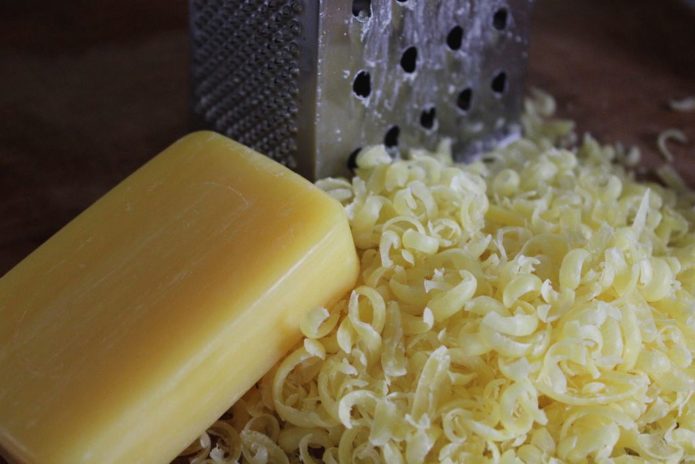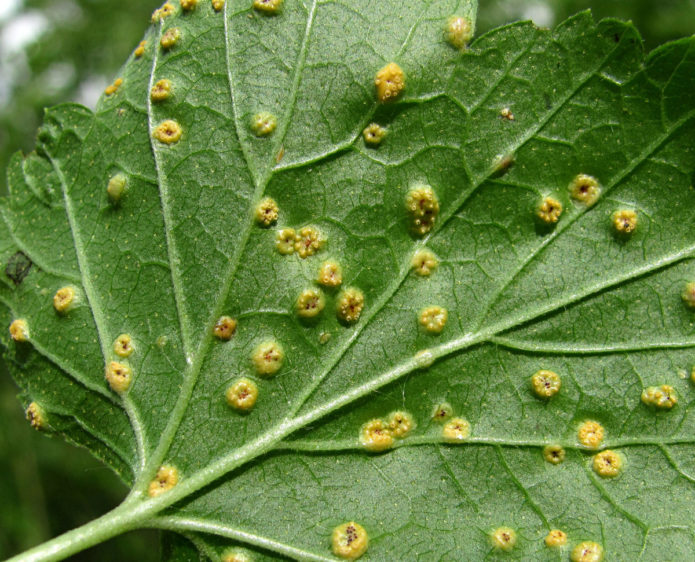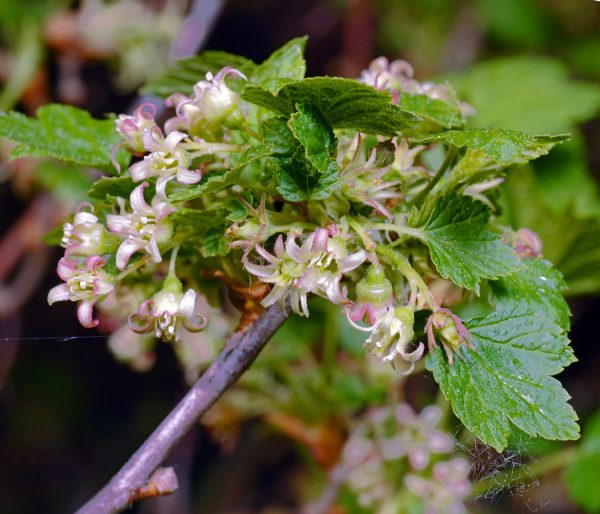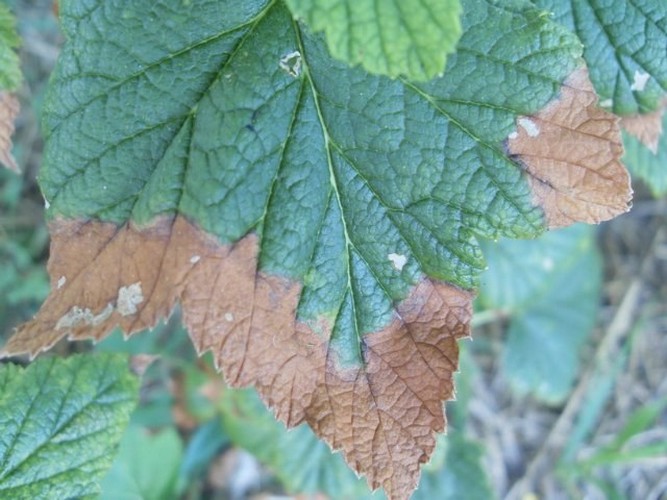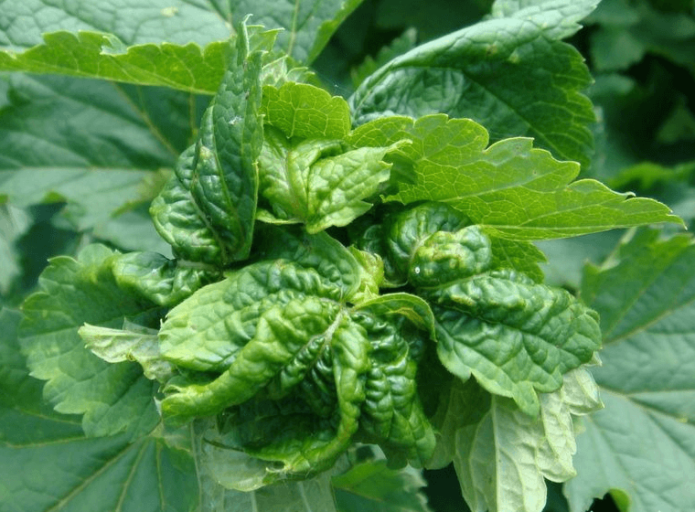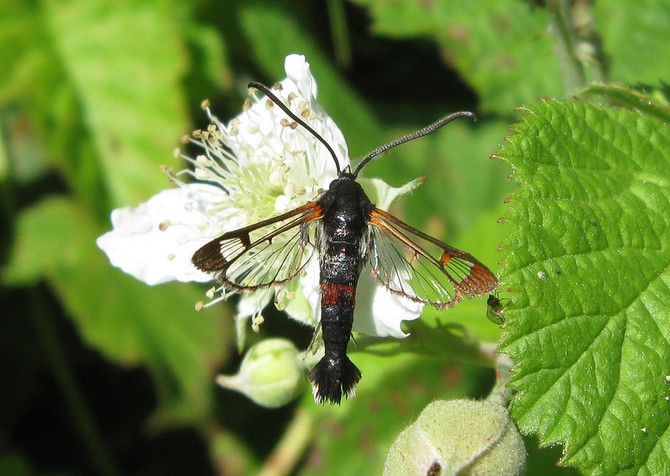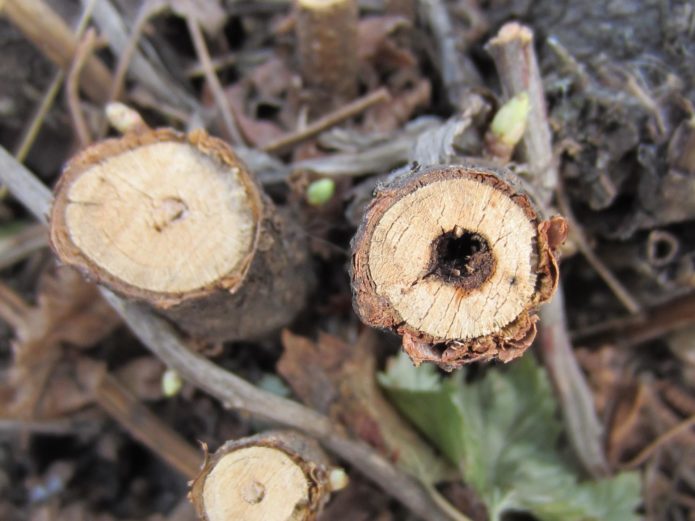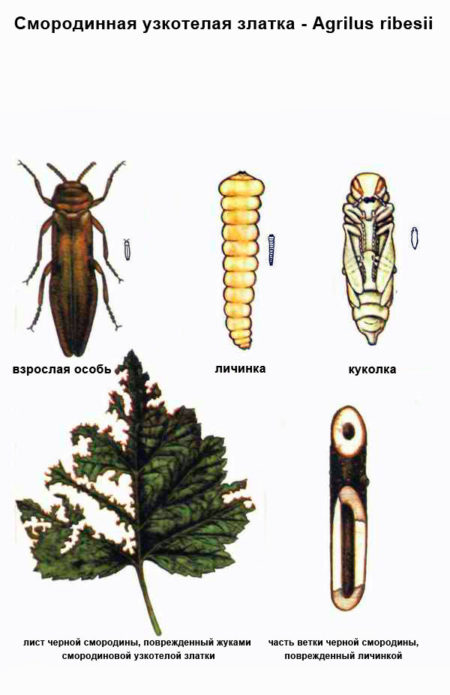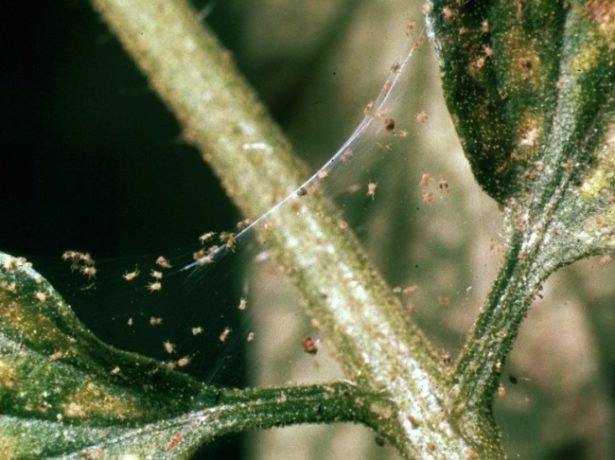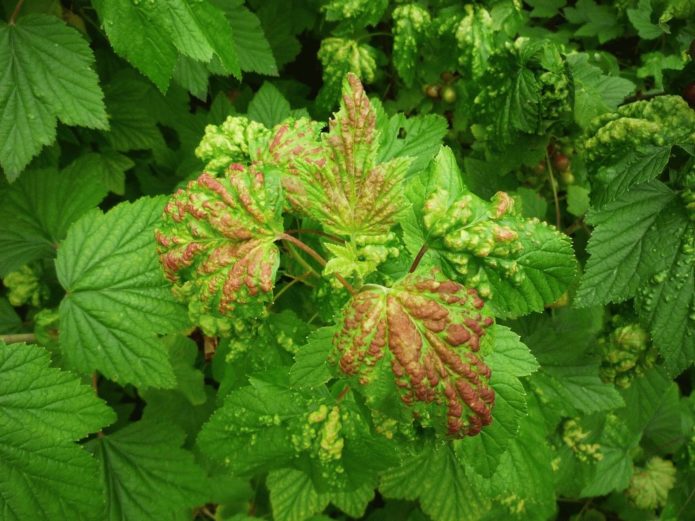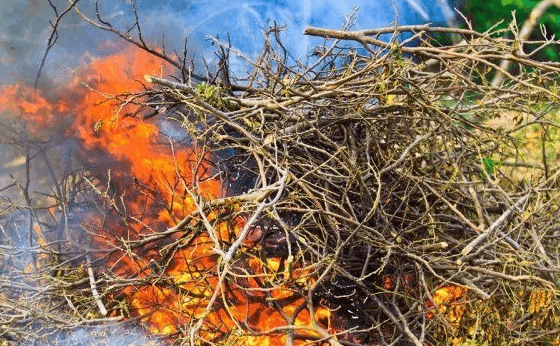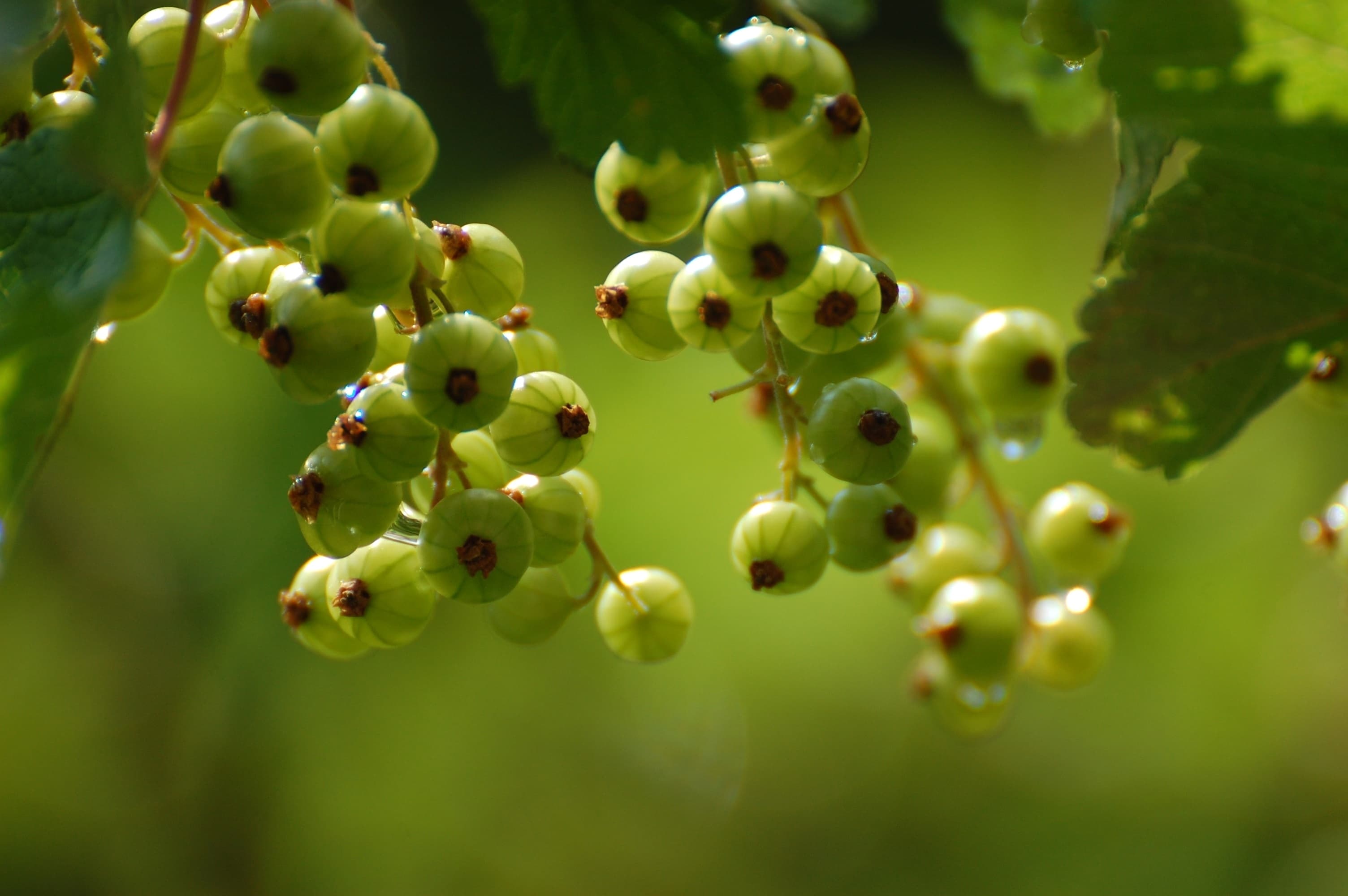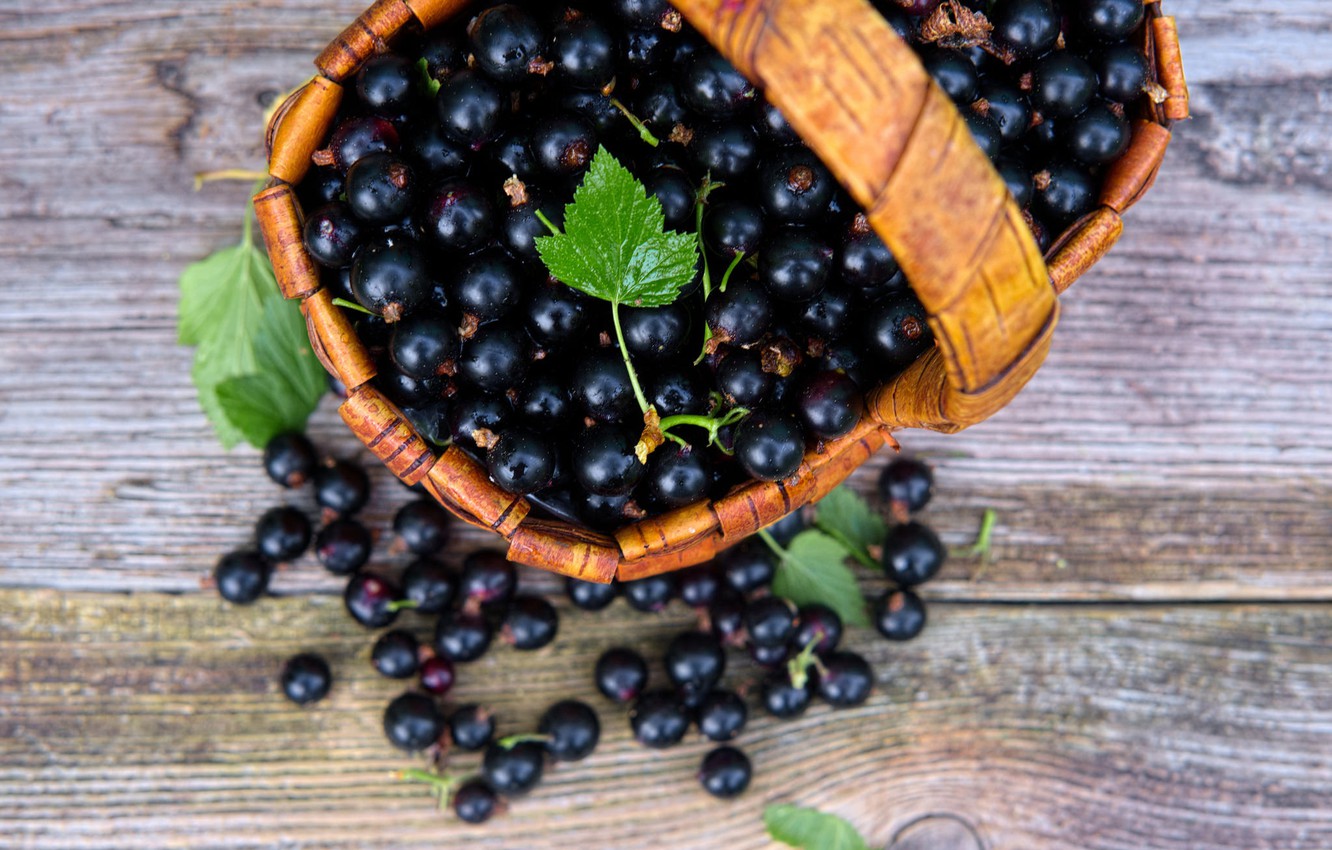A popular berry culture - black currant - is susceptible to many diseases, and pests love it. In order to grow a healthy bush and get a decent harvest, the gardener needs to know the signs of major diseases and be able to identify harmful insects. There are various ways to treat black currant.
Content
Prevention is the basis of the health of black currant
As with all fruit crops, prevention plays a decisive role in the fight against diseases and pests for black currants. If the gardener regularly and on time performs certain preventive procedures, then most likely he will not have to face the need to treat diseases or destroy pests. These procedures are mostly unified and are common to all plants in the garden.
Table: preventive measures against diseases and pests of black currant
| Dates | activity | How to conduct | Achieved effect |
| Autumn, after the end of leaf fall | Collection and disposal of fallen leaves | All fallen leaves in the garden are raked into heaps and burned | Spores of pathogens of fungal diseases and pests wintering in foliage and branch cracks are destroyed. The resulting ash is used as fertilizer |
| Sanitary pruning | Cut out old, dry shoots, as well as diseased and damaged ones. After pruning, they are burned | ||
| Late fall | Digging the soil around the bushes to a depth of 20-30 cm with overturning the layers | Pests and spores of fungi overwintering in the soil will be raised to the surface and die from exposure to low temperatures | |
| Treatment of bushes with a 3% solution of copper sulfate | Sprayed with a garden sprayer | Prevention of fungal diseases and pests | |
| Early spring | |||
| Boiling water treatment | Carried out before treatment with copper sulfate by scalding the bushes with hot water at a temperature of 80-85 ° C | ||
| Spring | Treatment with fungicides and insecticides | Sprayed with preparations three times:
| |
Diseases of black currant
Like many horticultural crops, black currants are mainly susceptible to fungal diseases. For their treatment and prevention, special preparations are used, united in a group of so-called fungicides. In general, fungicides are effective against all or most fungal diseases, but some are selective.
Powdery mildew
This is a fungal disease caused by a fungus of the genus Sphaerotheca. A sign of the onset of the disease is a whitish-gray coating on the leaves and tops of the shoots, which usually appears in early summer. At first it can be wiped off or washed off, but over time it becomes brown and is no longer washed off.
Favorable conditions for the development of fungus - high humidity and air temperature within + 28-30 ° C. When berries are damaged, they become unsuitable for food, and with significant damage to leaves and shoots, the plant weakens and does not tolerate winter frosts. If signs of illness are detected, first it is worth applying sparing folk methods - processing with infusions and solutions:
- ash (2 liters of wood ash per bucket of water are insisted for a day);
- soap and soda (rub 100 g of laundry soap on a grater, add 100 g of soda ash and dissolve in 10 liters of hot water);
- iodine (50 ml per 10 l of water).
In advanced cases, it is necessary to resort to chemical treatments (fungicides) such as Horus, Quadris, Strobi, etc. Due to the fact that fungicides are addictive to fungi, their use is effective no more than three times per season (for drugs with the same active ingredient). The interval of treatments for severe damage is 7-10 days. In summer, it is good to use the biofungicide Fitosporin-M for spraying - it can be used an unlimited number of times. Plus, it's safe and the berries can be eaten immediately after processing.
The crop can die if you do not take measures to get rid of powdery mildew, and it is even better to carry out prevention on time:https://flowers.desigusxpro.com/en/bolezni-rasteniy/muchnistaya-rosa.html
Anthracnose
It is also a fungal disease. Spores of the pathogen overwinter in fallen leaves, in addition, they can enter the plant with the help of insects and wind. The disease is more common in areas with a humid climate and primarily affects weakened plants. In dry summers, infection is practically impossible. Favorable factors are also the high acidity of the soil and the lack of phosphorus and potassium in it. The first symptoms of anthracnose appear in midsummer as lumpy brown spots with dark borders on the lower leaves.
After a while, the spots merge and the leaves dry out. By the end of July, they can crumble, and depressed brown spots of an oblong shape are formed on the shoots.
Usually, the preventive measures described above are sufficient to prevent the problem. But if the disease still could not be avoided, then fungicide treatments should be applied. The fastest action is provided by Strobe, Quadris, Horus.
Septoria (white spot)
The development of this fungal disease is also facilitated by high humidity, poor illumination, and thickening of the plantings. Septoria can be recognized by the appearance of small brown spots on the leaves (their diameter is 2–3 mm). By about the middle of summer, the edges of the spots become brown, and their middle becomes white. Affected leaves and shoots should be removed and the bushes treated with fungicides.

By about the middle of summer, the edges of the septoria spots become brown, and the middle turns white
Rust
There are two types of rust on currants:
- goblet - the formation of yellow bulges on the underside of the leaf, resembling wart in shape;
- columnar - a characteristic feature of this disease is small spots on the leaves of a brownish-orange color.
If you do not take action in time, then soon the leaves and berries begin to fall off. Methods for preventing and treating rust are common for all fungal diseases - removal of affected plant parts, treatment with fungicides, etc.
Terry
This disease is viral. Various insects (ticks, aphids, gall midges, etc.) bring viruses to the bush, and seedlings may also be infected when planting. In addition, pruning contamination is possible if an untreated cutting tool is used. Symptoms of the disease do not appear soon - 1–2 years after infection. The only thing that an infection can give out at first is the disappearance of the characteristic currant smell.
The first visual signs appear in spring. There are quite a few of them:
- leaf opening and flowering are delayed;
- instead of five-lobed leaves, three-lobed leaves are formed with large sparse denticles at the edges;
- flowers become divisible, while in healthy bushes they are accrete;
- instead of white, the flowers become purple;
- flower brushes lengthen and also turn purple or dirty pink;
- few fruits are formed and they have an ugly shape;
- a large number of short and thin shoots appear;
- leaves roll up.
The disease develops slowly, its symptoms intensify over time. It cannot be treated - the diseased bush must be uprooted and burned. In its place, no currants can be planted for five years.
Terry prevention measures:
- use only healthy seedlings from reliable suppliers;
- decontaminate the cutting tool before trimming behavior;
- fight pests;
- grow varieties that are immune to terry:
- Memory of Michurin;
- Dubrovskaya;
- Binar;
- Nara;
- Primorsky champion;
- Leah is fertile;
- Desirable and others.
Marginal leaf necrosis
The disease is non-infectious and is caused by excess chlorine in the soil. It appears by the end of summer. A wide dry strip of ash-gray color forms along the edges of the leaves. There is a well-defined border between this strip and healthy tissue. If such symptoms are found in the next season, it is necessary twice (in the spring after swelling of the buds and after the end of flowering) to feed with urea (the norm is 20-30 g / m2).
If the dry strip has a darker color, and its border is blurred, then this indicates potassium starvation. Accordingly, in the next season, at the beginning of summer, you need to add a solution of potassium monophosphate to the soil - add 20 g of fertilizer to a bucket of water and water the bushes (the norm is 20 g / m2).
Experienced summer residents know that after winter, many pests begin to manifest themselves and, as the temperature rises, they begin to feast on currants:https://flowers.desigusxpro.com/en/bolezni-rasteniy/obrabotka-smorodiny-ot-bolezney-i-vrediteley-vesnoy.html
Black currant pests
This berry crop is often attacked by various harmful insects and ticks.
Aphid
Shoot gooseberry aphids usually settle on black currants. It is easy to find it - the leaves, on the inner side of which a colony of insects has settled, curl up into a tube. Aphids feed on the juice of young leaves and shoots. It gets on the plant, having hatched from eggs laid last season under the bark of annual shoots.And also ants bring it in in order to subsequently feed on the sweet secretions of aphids (the so-called honeydew).
Standard preventive measures significantly reduce the likelihood of an aphid attack, but if it is still detected, then the bushes should be treated with insecticides (this is the name for insect control drugs), for example, Nitrafen, Decis, Iskra and others. In the summer, it is better to use biological preparations such as Iskra-Bio, Fitoverm, etc. In addition to chemicals, folk remedies are used, for example:
- 500 grams of tobacco dust is dissolved in a bucket of water and infused for 3-4 days, after which 50 g of laundry soap, grated on a coarse grater, is added to improve the adhesion of the solution to the leaves;
- 500 g of onion husks are poured with hot water and insisted for one day;
- garlic in an amount of 500 g is finely crushed and 5 liters of water are poured for a day. Then it is filtered and used for spraying;
- 1 tablespoon of soda ash is added to a bucket of water (10 l), in which 1 cup of chopped onions is dissolved.
You can plant nearby plants that repel aphids (marigolds, garlic, onions, coriander, fennel, mustard and others), and you also need to fight ants on the site.
Glass-maker
The glass butterfly has transparent wings, which it owes its name to. The wingspan is 25–28 mm.
The larvae cause significant harm to the plant: currant shoots turn black inside and dry up, as the larvae gnaw them, leaving traces of their vital activity. The fight is most effective during the butterfly's flight, which usually begins at the end of June, about two weeks after the black currant blooms. In order not to miss this moment, bowls with fermented currant jam are placed near the bushes. As soon as butterflies begin to fly on it, you should immediately spray the bushes with insecticides. After a week, the treatment is repeated.
Since it is difficult to deal with this pest, preventive measures should be taken in a timely manner:
- purchase healthy seedlings from trusted sellers. Nurseries guarantee protection against pests for 4-5 years;
- Before planting, cover the seedlings with sand for 72 hours, which is moistened with solutions of biological preparations Nemabakt and Antonem-F. The nematodes contained in solutions are natural enemies of the larvae. The temperature during processing must not be lower than +25 ° C;
- conduct regular inspections during the growing season. Found damaged shoots should be cut at the root and burned;
- during the pupation period of the larvae (from May to the end of June), you need to periodically loosen the soil around the bush. Adding a mixture of ash, tobacco dust (300 g each), ground pepper, makhorka and mustard (one tablespoon each) to the soil helps well.
Narrow-bodied currant goldfish
This beetle is 9 mm long with a narrow green body with a metallic sheen. The beetles themselves feed on leaves, and the larvae gnaw out the stems, eating their core, which makes the shoots dry up. The length of the passages can reach 40 cm, their space is filled with brown excrement of the goldfish. On this basis, it is possible to distinguish stems damaged by a goldfish from similar injuries by a glassy larva, in which the stems are usually half-empty and black.
They fight with goldfish in the same way as with glassware. Additionally, you can apply more such methods:
- arrange heaps of fresh wood residues near currant bushes, which are bait for beetles. By autumn, a large number of pests usually accumulate in such heaps - all that remains is to burn them;
- beetles fly only in hot weather in bright sunlight. The rest of the time, they hide under currant leaves. Using this feature, you can shake off the beetles on the cloth spread under the bushes and then destroy them.
Kidney mite
A very small (up to 0.2–0.3 mm) spider-like arthropod animal affects the buds of the currant. Up to one thousand individuals can winter in one affected kidney. You can detect a tick by changing the shape of the kidneys - they become rounded and increase in size.
Early spring treatments with boiling water, as mentioned earlier, contribute to the destruction of the pest.
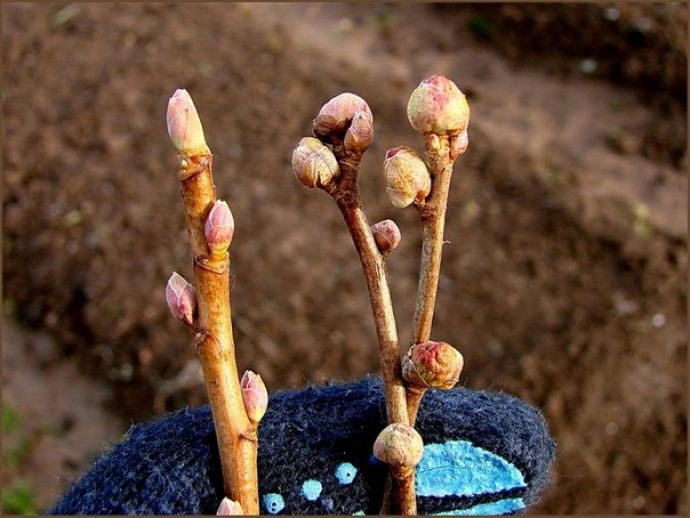
From healthy (left) kidneys affected by a kidney mite (right) differ in increased size and rounded shape
Sometimes, instead of boiling water, fire treatment is used. To do this, the flame of a blowtorch is quickly carried along the branches 2-3 times at a distance of 10-15 cm. Since healthy kidneys have hard scales, the flame will not have time to damage them. Infected buds have a loose structure, so mites are easily destroyed by fire.
To combat ticks, there are special preparations - acaricides. For example, Akarin and Fitoverm will help to cope with ticks in the summer, as they have a waiting period of only two days. In addition, sulfur-containing preparations are effective: for prevention, currants are sprayed twice with Karbofos (75 g per bucket of water) or colloidal sulfur (10 g per bucket of water), and the first treatment is carried out during flowering, and the second after its completion.
Gardeners recognize the best folk remedy as a garlic infusion prepared according to the rules indicated above.
A bush struck by a currant bud mite looks unnatural: it is weak, the shoots are curved, there are few flowers and berries, they crumble ahead of time:https://flowers.desigusxpro.com/en/yagody/smorodina/pochkovyy-kleshch-na-smorodine-mery-borby-vesnoy.html
Video: how to properly deal with a kidney mite on currants
Spider mite
The fact that a spider mite has appeared on the currant can be determined in the early stages by the appearance of yellow dots on the leaves. Further, the affected leaves become, as it were, "marble", dry up and fall off, and nests, entangled in cobwebs, appear on the plant.
Methods of control and prevention are similar to those described above in the section about the kidney mite. Additionally, you can recommend the Sunmite acaricide. It takes effect 15 minutes after treatment and retains its protective effect for up to 1.5 months. And also the spider mite can be simply washed off the leaves with water from a hose under pressure.
Gall aphid
The appearance of red bumpy spots on the leaves is a sign of an attack by a gall aphid. This insect 2 mm long of pale green-yellow color more often settles on the leaves of red, white and other “colored” currants, on black currants it is rarely observed, since its leaf plates are denser and more difficult to pierce by insects. When the gall aphid sucks the juice from the leaves of the currant, a growth forms on the bush - gall (hence the name of the aphid).
To destroy the gall aphid, you need:
- process with boiling water until the leaves bloom;
- spray the bush with a decoction of tobacco dust (250-350 g per 10 liters of water, bring to a boil, close the lid and leave for 3 days);
- in case of severe infection, use Aktelik (2 ml per 1.3 l of water, spray twice at weekly intervals during the growing season) or Confidor Maxi (1 ml per 10 l of water).
During the season, several generations of aphids are born, so the treatment must be carried out twice: before the buds open and after the harvest.
Khrushches and bears
Soil pests such as beetles (beetle larvae) and beetles can hibernate under black currant roots and damage them. Diazinon-based drugs are used against them, for example, Medvetox.
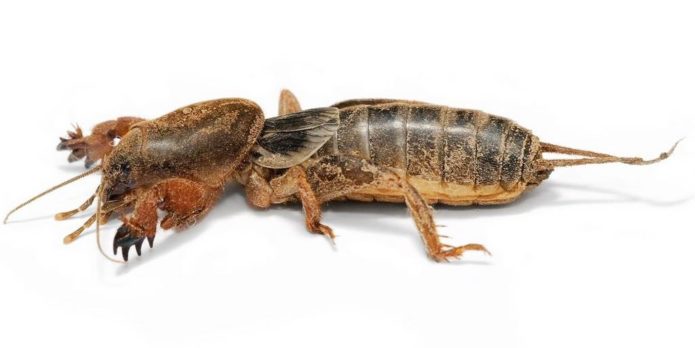
Medvedka is a predatory insect of the Orthoptera order - it gnaws at the roots of plants when it digs in the ground
Non-disease and pest problems
Pests and diseases can damage flowers, ovaries and shoots of black currant, but in general this shrub is unpretentious to care for, grows almost everywhere and for a long time, does not require special agricultural technology. However, sometimes problems arise with it that are not related to diseases and pests.
Black currant does not bear fruit
This problem can have several reasons:
- wrong landing site. Deep shade or a scorching, sultry sun are unacceptable conditions for the development of black currants. They prefer light penumbra with good illumination;
- acidified soils - the optimal acidity level is pH 6–7;
- growing non-zoned varieties;
- freezing of flower buds as a result of recurrent frosts. To prevent this problem on those nights when spring frosts are expected, fires are burned in the garden, smoke bombs are used;
- insufficient watering. Currant is a moisture-loving crop and with a lack of moisture on hot days it can throw off all ovaries;
- thickening of bushes with old shoots. It is necessary to regularly carry out thinning pruning, as well as pinching (chasing) of young growths.
Black currant dries up after winter
Most often, the drying of the shoots is caused by damage to the root system. This, in turn, can occur due to root rot caused by stagnant moisture and boggy areas, in addition, the roots can be damaged by moles.
In order to prevent root rot, it should be planting currants in autumn lay drainage at the bottom of the pit, and in early spring, in time to shove off snow from their base, not allowing melt water to accumulate.
Against moles, you can use acoustic devices ("Krotopug", "Antikrot", "Krotogon"). They emit ultrasound that simulates a danger signal. And also a cat or cat (if you have one) will help in the fight against these pests.
If the damage to the roots is significant or the bush is old (10 years or more), it is advisable to replace it with a new one.
Video: why currant bushes dry up
We have listed only the main pests and common diseases of black currant. The fight against them does not always end in victory - there are often cases of plant death. Therefore, without timely and regular preventive maintenance, it is difficult to count on a positive result.

